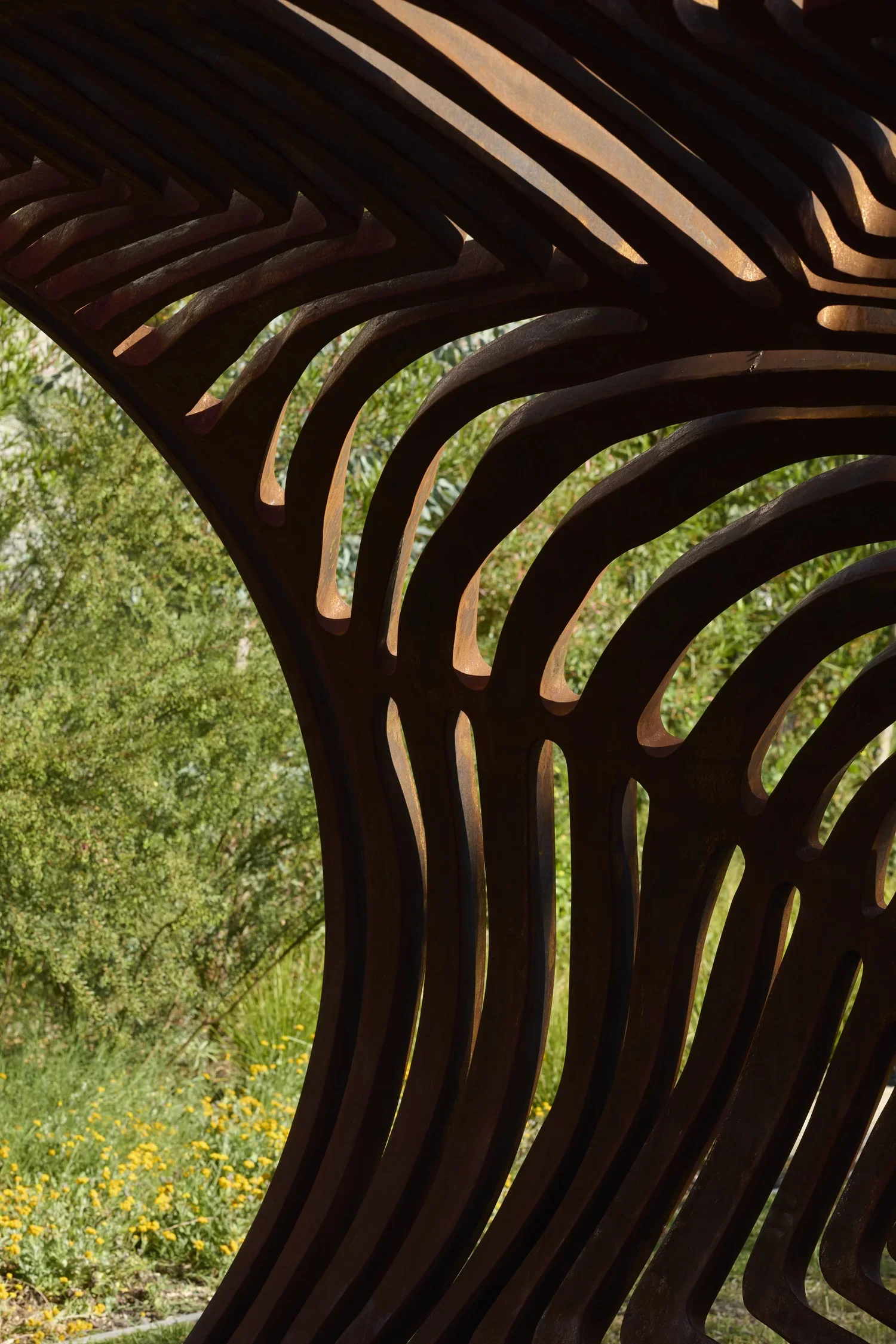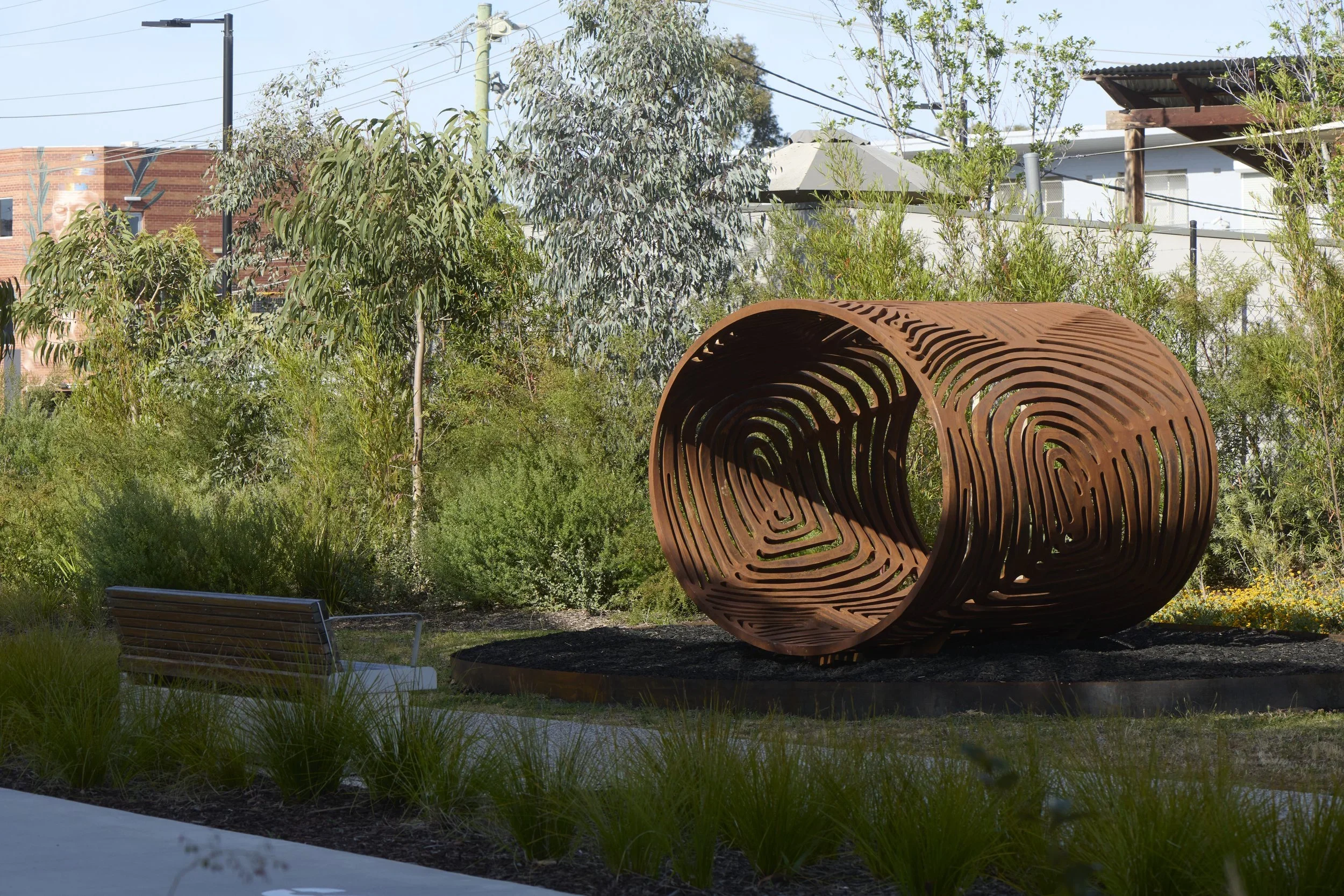
-
Public Art
A new public art project for the Level Crossing Removal Project, WRAP managed design, fabrication and delivery of the commission with artist Lisa Waup.
Art Consultant Andy Dinan.
-
Mixed Cultural First Nations artist Lisa Waup
-
Fred Kroh
As part of Victoria’s ambitious Level Crossing Removal Project — the largest of its kind in the state, removing upwards of 75 dangerous and congested crossings across Melbourne by mid‑2025 and aiming for 110 by 2030 — Embedded Memory stands as a culturally resonant public artwork woven into urban transformation.
Conceived by mixed cultural First Nations artist and curator Lisa Waup, who was born in Preston and raised in Narrm (Melbourne), Embedded Memory is a Corten steel sculpture positioned between the northern entrance of Bell Street Station and Bell Street itself. Wrap worked closely with Lisa throughout the concepting process, the placement and form—crafted to interact subtly with shifting sunlight and seasonal change—inviting commuters to pause, observe, and connect with the layers of Country and an acknowledgement of First Peoples.
Waup’s multidisciplinary practice — spanning weaving, printmaking, fashion, and sculpture — is grounded in the exploration of identity, ancestral memory, and the passage of time. Through Embedded Memory, she creates a visual dialogue between Country and community, past and present.
The artwork’s meaning unfolds in multiple dimensions:
The interwoven lines evoke the interconnection of personal memory and collective histories;
The material warmth of rusting steel and the interplay of light and shadow capture the mutable nature of memory and place;
This commission, initially curated by MARS Gallery’s Andy Dinan Art Consulting was delivered from concept, fabrication and installation with WRAP and forms part of the integrated public art strategy for the Level Crossing Removal Project, ensures the work is both site-responsive and deeply rooted in cultural presence.
Through Embedded Memory, Waup offers a poetic reminder that infrastructure can embrace culture—and that even amidst urban renewal, the layers of Country remain visible, sacred, and ever-present.
From the artist —
"Walking through the landscape during my first visit to this place, I felt the movement of the wind through the grass and the Eucalyptus trees.
This work begins with and acknowledges the Wurundjeri Woi Wurrung People, the traditional custodians of this land, and their unwavering ties to Country, waterways, community, and culture.
The line work, reminiscent of handprints, represents the lines etched into our palms – testament to our identity.
I was born in Preston - this adopted Country of mine holds numerous precious memories and opportunities. Through, this piece, I want to boldly underscore the significance of Wurundjeri, of ancestors, the past, present and future. There have been times where identity has not always been acknowledged or exposed and so this piece, boldly and proudly fills that space.
'Within these lines, the memory of the landscape resides – the rivers that have shaped this place. These rivers, like threads, have woven the fabric of community, connecting paths and generations."




